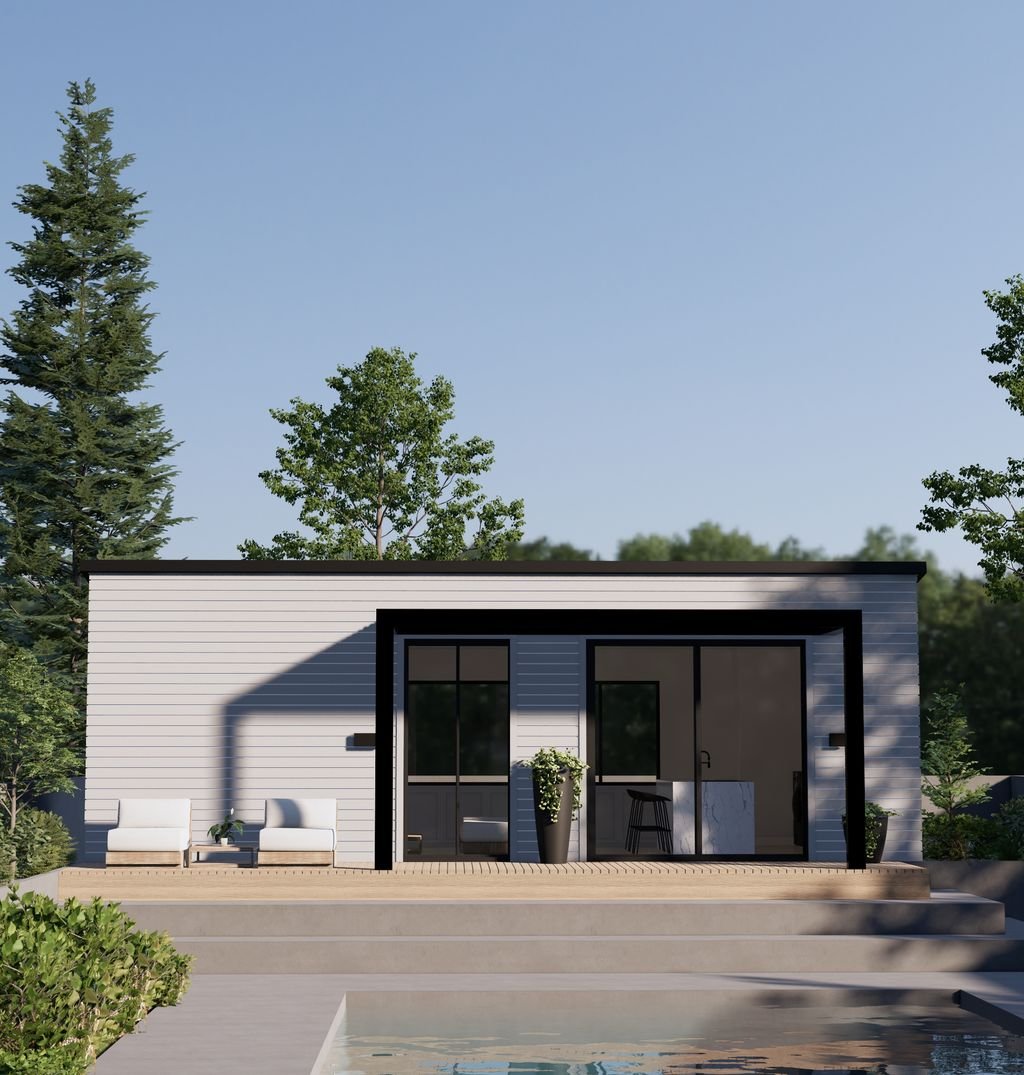Introduction: The Modular Movement Is Here
California’s real estate market has long been known for its sky-high prices, housing shortages, and red tape that makes traditional homebuilding painfully slow. But a quiet revolution is underway — and it’s coming in a box Why Modular Homes Are the Future of California Housing
Modular homes, once considered cheap alternatives, are now high-tech, stylish, and sustainable dwellings changing how Californians think about homeownership. As affordability, speed, and innovation take center stage, modular housing is disrupting the Golden State’s real estate scene in 2025 — from Los Angeles to San Francisco and everywhere in between.
In this blog, we unpack why it’s time to think inside the box, explore FAQs, and show you how this new wave of housing could be your smartest investment yet.
What Are Modular Homes, Really?
Modular homes are factory-built houses constructed in sections (or modules) and then transported to a building site for assembly. Unlike mobile homes or RVs, modular homes must meet the same building codes as traditional site-built homes.
Key Features:
- Built off-site in climate-controlled facilities
- Assembled on-site in a matter of weeks, not months
- Fully customizable — from modern aesthetics to smart home tech
- Must pass California’s stringent building standards
These are not your grandmother’s prefabs. Today’s modular homes can be indistinguishable from conventional builds — but faster, greener, and more affordable.
Why Modular Homes Are Gaining Traction in California
California is facing a housing crisis:
- 3.5 million housing units needed by 2025 (source: CA Dept. of Housing)
- Median home price: $833,000+ (as of 2025)
- Traditional build time: 8–12 months or longer
Modular homes address all three issues head-on:
1. Speed of Construction
Factory production slashes build time by up to 60%, meaning developers and buyers can occupy homes in weeks, not months.
2. Affordability
On average, modular homes cost 20–30% less than site-built homes due to:
- Lower labor costs
- Reduced construction waste
- Streamlined permitting (in many cases)
3. Sustainability
California is pushing hard for net-zero housing. Modular builders are rising to the challenge with:
- Energy-efficient materials
- Solar-ready roofing
- Smart HVAC systems
- LEED certifications
4. Design Versatility
Think sleek, modern aesthetics — not cookie-cutter designs. Modular homes now boast:
- Rooftop decks
- Open-concept kitchens
- High-end finishes
- Smart home integrations
Frequently Asked Questions About Modular Homes in California
1. Are modular homes legal in California?
Yes. In fact, the California Department of Housing and Community Development (HCD) regulates modular construction, ensuring all homes meet state and local building codes.
2. Can I finance a modular home like a traditional house?
Absolutely. Most major lenders offer conventional, FHA, and VA loans for modular homes. Appraisals and mortgages treat them similarly to site-built homes.
3. What about permits and zoning?
Zoning laws vary by city and county. However, California is becoming increasingly modular-friendly, especially with recent housing legislation that supports alternative construction methods.
4. How long do modular homes last?
With proper maintenance, a modular home can last 50+ years, just like a traditional home. Some builders even offer 30-year structural warranties.
5. Can I build a modular ADU (Accessory Dwelling Unit)?
Yes — and it’s one of the fastest-growing markets! Pre-approved ADU modular units are skyrocketing across California, offering rental income potential or multigenerational living options.
Real Impact: Case Studies & Numbers That Matter
Oakland, CA: A modular housing startup delivered 16 units in under 90 days, reducing project costs by $1.2 million compared to traditional builds.
San Diego, CA: A developer added modular ADUs behind single-family homes, increasing property value by over 25% and generating an additional $2,000/month in rental income.
Los Angeles, CA: LA County approved a 100-unit modular project to house the homeless — completed in half the time of comparable builds, at 30% lower cost.
Why Modular Homes Are the Future of California Real Estate
1. Scalability
Developers can scale quickly with modular projects. Cities can meet their housing goals faster and cheaper with fewer delays.
2. Urban Infill Opportunities
Modular fits perfectly on tight urban lots, where traditional construction is impractical or too expensive.
3. Resilience to Labor Shortages
California’s skilled labor shortage is one of the top drivers of rising housing costs. Modular construction requires fewer on-site workers, solving a major bottleneck.
4. Investor-Friendly
With quicker ROI, reduced carrying costs, and increasing consumer demand, modular homes are attracting savvy investors and real estate funds.
Think Inside the Box: Final Thoughts
The phrase “think outside the box” may still inspire creativity — but when it comes to California real estate in 2025, it’s time to think inside the box.
Modular homes offer a rare combination of affordability, efficiency, and sustainability, meeting the needs of developers, buyers, and policymakers alike. Whether you're a first-time homebuyer, a real estate investor, or a city planner, the message is clear:





Comments